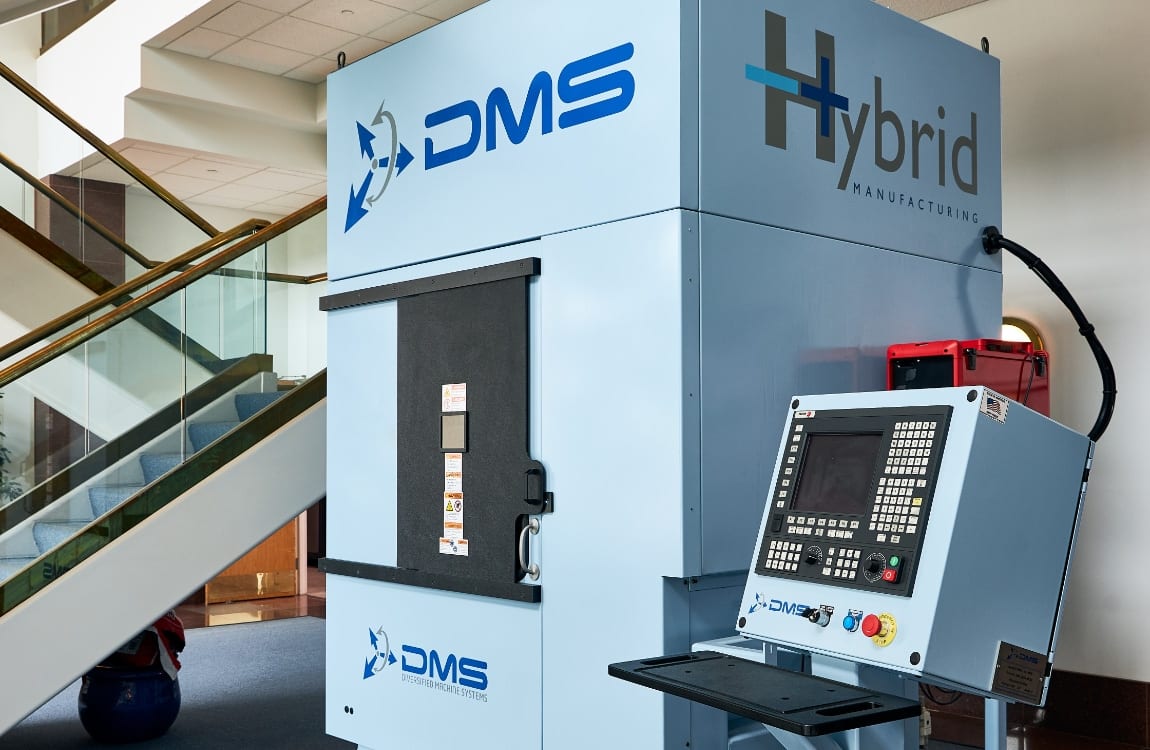Diversified Machine Systems (DMS) has a long history of making top-notch routers, but hybrid machines are one of our newer obsessions. For the past three years, we’ve explored the benefits that result when you merge different machining processes. Our hybrid line combines an additive process—3D printing, in common terms—with a subtractive process.
The results speak for themselves. We could talk in an abstract way about the theoretical benefits of hybrid technology, but we’d rather use a specific, real-world example. This fall, we manufactured a protective belt guard with one of our hybrid machines. Here’s how it turned out.
Evaluating Pros and Cons
There are two ways that we could have made our belt cover with traditional methods. Like many DMS projects, we could have used a purely subtractive process. It would have been fairly straightforward to machine from a solid block of aluminum. However, there were downsides to this method. The block would have started at 26x16x6 inches, most of which would have been turned into chips as we carved it away. That’s a lot of wasted material.
The other way we could have made the belt guard is by casting. However, casting is more suitable for a high-production run. In this case, since we only needed to make a few pieces, we found that the tooling was cost-prohibitive and that the long lead time was additionally prohibitive. Our smaller run demanded a different process.
As we evaluated the pros and cons of an exclusively subtractive process or a casting process, we realized a third option would serve us best. This was the perfect project for a hybrid machine.
Designing with Hybrid in Mind
There are two ways to apply a hybrid machine—to a new project or to an existing project. On a brand new project, a hybrid machine allows you to manufacture in ways that a traditional machine wouldn’t allow. This opens up more design possibilities and allows you greater freedom, as certain constraints are reduced.
For legacy components, existing machine designs, or component designs that you’ve been making for years, the hybrid process may require some modifications to the design. For example, overhang angles are a big design constraint: the overhang angle must fit within the process limits. (For our purposes, a 3-axis machine has a 35-degree overhang angle.) Once you’ve modified your design to fit within the hybrid process, you can get to work.
For our belt guard, our mechanical engineering department had already designed the cover to be made exclusively with subtractive machine operations. We had to redesign for an additive method—an adjustment that took some time, but was ultimately worthwhile for our goals.
The Results
We revised our design to accommodate a hybrid process and then began machining. Once we started manufacturing our belt cover, the whole process took eight hours — an expedient turnaround for this project.
When all was said and done, our belt cover was a big success. We eliminated the waste of an exclusively subtractive process, and we avoided the time and cost of having the part cast.
As you consider future undertakings, take some time to consider whether a hybrid machine might be a good fit for you. DMS is happy to provide insight on how you might save time and money through hybrid machining.
If you would like to learn more about our Hybrid machining process, please contact info@dmscncrouters.com or 855-255-6064.


